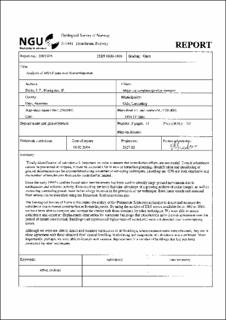| dc.description.abstract | Timely identification of subsidence is important in order to ensure that remediation efforts are successful. Even if subsidence cannot be prevented or stopped, it must be accounted for in new construction planning. Identification and monitoring of ground deformation can be accomplished using a number of surveying techniques. Levelling and GPS are both expensive and the number of benchmarks that can be controlled is limited. Since the aerly 1990's satellite-based radar interferometry has been used to identify large ground movements due to earthquakes and volcanic activity. Data stacking methods that take advantage of a growing archive of radar imasges, as well as increasing computing power, have led to a large increase in the precision of the technique. Both linear trends and seasonal fluctuations can be identifed using the Permanent Scatterers technique. The Geological Survey of Norway has tested the ability of the Permanent Scatterers technique to detect and measure the subsidence due to tunnel construction at Romeriksporten. By using the archive of ERS scenes available from 1992 to 2001, we have been able to compare and contrast the results with those obtained by other techniques. We were able to detect subsidence and construct displacement-time series for numerous buildings that experienced up to 2 cm displacement over the period of tunnel construction. Buildings that experienced higher rates of subsidence were not detected due to unwrapping errors. Although we were not able to detect and measure subsidence in all buildings, where measurements were obtained, they are in close agreement with those obtained from optical levelling. Both timing and magnitude of subsidence was confirmed. More importantly, perhaps, we were able to identify and measure displacement in a number of buildings that had not been monitored by other techniques. | |

